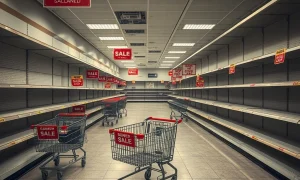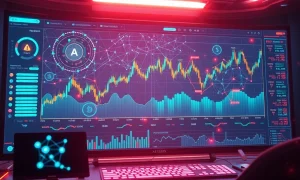Another American retail giant has fallen victim to economic pressures, filing for Chapter 11 bankruptcy protection after six decades in business. This devastating development marks the end of an era for countless loyal customers and employees nationwide.
The Final Chapter 11 Bankruptcy Filing
The company officially filed for Chapter 11 bankruptcy protection in federal court yesterday. Consequently, this action will lead to complete liquidation of all remaining assets. Management cited insurmountable debt and changing consumer habits as primary factors. Moreover, the filing will affect all 127 remaining store locations immediately.
Historical Context of the Bankruptcy
Founded in 1961, the retailer once dominated its market segment. Initially, the company expanded rapidly throughout the 1970s and 1980s. However, increased competition from big-box retailers gradually eroded market share. Additionally, the shift to online shopping created further financial strain. Ultimately, these pressures made Chapter 11 bankruptcy inevitable.
Impact of Chapter 11 Proceedings
The Chapter 11 bankruptcy process will unfold over the next several months. Firstly, court-appointed trustees will inventory all company assets. Secondly, they will conduct going-out-of-business sales at all locations. Thirdly, proceeds will distribute to creditors according to bankruptcy law priority. Unfortunately, most unsecured creditors will recover minimal amounts.
Employee and Community Consequences
Approximately 3,400 employees will lose their jobs due to this Chapter 11 bankruptcy. Furthermore, many communities will lose anchor stores that operated for generations. Local suppliers and service providers will also experience significant financial impact. Therefore, the ripple effects will extend far beyond the company itself.
Industry-Wide Implications
This Chapter 11 bankruptcy represents broader retail industry challenges. Many traditional brick-and-mortar stores struggle with similar issues. Specifically, high operating costs and digital transformation create constant pressure. Consequently, analysts predict more retail bankruptcies in coming years. Industry experts closely watch these developments.
Lessons From the Bankruptcy
Business leaders can learn important lessons from this Chapter 11 bankruptcy case. Adaptation to market changes remains crucial for survival. Additionally, maintaining manageable debt levels proves essential. Companies must also embrace technological innovation proactively. Otherwise, they risk similar financial distress.
Frequently Asked Questions
What is Chapter 11 bankruptcy?
Chapter 11 bankruptcy provides reorganization protection for businesses. It allows companies to continue operations while restructuring debts.
Will customers receive refunds for gift cards?
Unfortunately, gift card holders typically become unsecured creditors in bankruptcy proceedings. Recovery rates for such claims are usually very low.
How long will store closing sales last?
Liquidation sales typically continue for 60-90 days following bankruptcy filings. However, exact timelines depend on inventory levels and court approvals.
What happens to employee pensions?
Employee pension plans receive protection through federal pension guarantee programs. However, specific benefits may reduce depending on plan funding levels.
Can another company acquire the business?
Sometimes competitors purchase assets during bankruptcy proceedings. However, complete business acquisitions after Chapter 11 filings remain relatively uncommon.
How will suppliers get paid?
Suppliers must file claims with the bankruptcy court. Secured creditors receive payment first, while unsecured creditors divide remaining assets proportionally.























